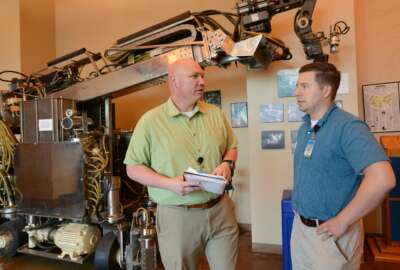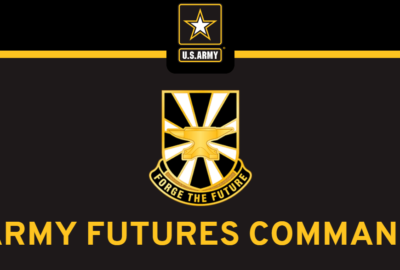Contrary to popular belief, the Pentagon really can buy and field things quickly when it needs to – including very complicated things. But doing so can come with some downsides that Army Futures Command believes it can avoid as it pivots toward more rapid acquisition.
There are some big examples of the U.S. military conducting complicated acquisition projects very quickly. Maybe the most famous is DoD’s rapid fielding of mine-resistant ambush-protected vehicles during the war in Afghanistan. The downside was it took a full-court press by the Pentagon’s most senior leadership to make the acquisition system work as quickly as it needed to.
Then there’s the hundreds of new communications capabilities the military rolled out to troops during the Iraq and Afghanistan wars: commanders got them fielded via urgent operational needs statements. The downside is they didn’t always fit into or scale with the military’s longer-term needs, which has led every Army CIO for the past decade to complain about integration challenges.
But Army Futures Command is thinking about rapid acquisition in a way that’s meant to avoid those problems, according to Gen. James Rainey, AFC’s commander.
“We need to transform, be agile be adaptive inside the next 18 to 24 months. We want to go fast, but you can’t go so fast that you just dump kit onto formations. So we have to think a little bit about training, sustainment, leader development,” he told an audience organized by the Association of the U.S. Army last week. “The bottom line is there are things that are absolutely available and doable in the world right now that we don’t have in our formations, and that we need. So we’re taking a different approach. I want to buy capabilities, not systems.”
One of the first capabilities the Army’s targeting with that new approach is loitering munitions – sometimes called suicide drones. Rainey said the demand, for now, is coming mainly from the Army’s special forces community. But AFC wants to also send a clear signal to industry that, over time, it’s going to want to buy the same types of capability at a larger scale – just not all at once.
Another area where Rainey thinks the approach fits well is new capabilities to counter opposing forces’ unmanned systems.
“The Army’s going to buy a bunch of [counter-UAS capabilities], but we only want to buy them for three brigade combat teams at a time. The capability doesn’t change over time, but I want to re-compete that every 18-to-24 months and buy it in tranches so that we make sure we have the best capability,” he said. “We’ll want to buy anything that works, that is trainable, and is not landlocked – UAS is UAS, and we’re never going to have enough … it’s going to be a character of the future of war. “
And the Army’s new approach to rapid acquisition might be characterized as much by what it doesn’t buy rapidly as what it does.
Rainey said AFC has some safeguards in place to make sure it avoids those problems of the past – buying numerous proprietary systems that are difficult to integrate into a formation or the Army’s broader networks.
“When we look at something and say, ‘Hey, we need this,’ before we decide to take the rapid acquisition approach, we’ll ask whether we have a plan to transition it to program a record,” he told reporters. “I wouldn’t sign up for rapid acquisition of something if we didn’t have a transition and landing spot for it. That’s one, but a bigger one is, if you have to build a training facility, if [the capability] comes with a big motor pool requirement or backside sustainment, that’s not a reason to not do it, but that automatically puts it in the deliberate modernization category. If something had a monstrous integration challenge, I wouldn’t go after it as a rapid acquisition, I’d take a little more deliberate, slow and steady approach.”
But Rainey said that’s what makes something like loitering munitions so attractive for a rapid acquisition pipeline. Since they’re essentially kamikaze drones, the Army can think of them in the same way it thinks about any other munition. And if it acquires them properly, they’ll fit into formations that way too.
“Their mortar platoon that they already have could shoot it, their weapons company that they already have could shoot it, a good rifle squad could shoot it,” he said. “Same thing with a UAS. We can’t rapidly acquire a UAS if it needs a platoon of soldiers and a launcher and a support system and contractor field service representatives. But we can go out and buy an attritable UAS system that shows up through the class nine system – replacement parts, not end items – and if the unit crashes it, they crash it.”
Rainey says that’s not to say there aren’t still dangers to moving quickly. One of them might be rapidly acquiring too many disparate systems and handing them off to Army units all at once.
“Is it possible to do so much rapid acquisition that sum of three or four or five things exceeds the capacity of a unit to receive it? That is a valid concern that we’re paying attention to,” he said.
Copyright
© 2024 Federal News Network. All rights reserved. This website is not intended for users located within the European Economic Area.






